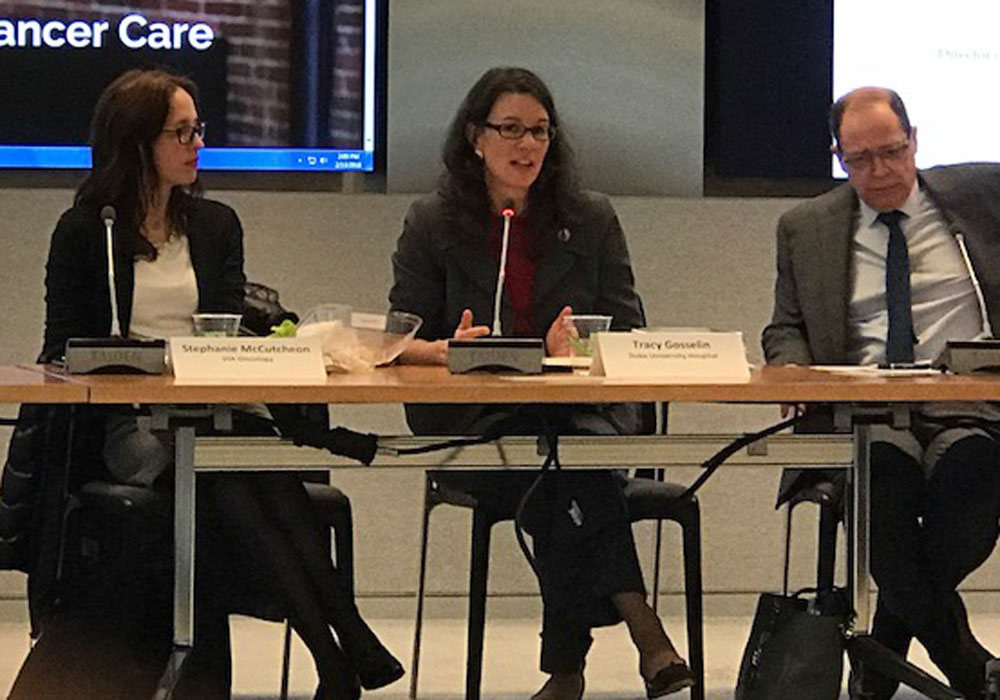By Tracy Gosselin, PhD, RN, AOCN®, NEA-BC
I was selected to represent ONS as a panelist at the Cancer Innovation Coalition meeting held in Washington, DC, in February 2018. The meeting, “Integrating Patient Perspective into Clinical Pathways: A Dialogue Between Stakeholders,” brought together patient advocates, healthcare professionals, and technology stakeholders to address and identify the importance of patient-centered care and involving patients in clinical pathways. The National Patient Advocate Foundation released an article outlining the topics covered in our discussion.
My fellow panelists included a pharmacist and physicians who represented both the vendor and practice perspectives. Our audience was comprised of advocacy groups and other health policy professionals. As an oncology nurse, I framed my comments with the National Academies of Science and Medicine’s report from 2001, Crossing the Quality Chasm, in mind. I emphasized the goals of clinical pathways, why patient input and engagement is critical when thinking about patient-centered care, and how this can tie into the quadruple aim of health care.
Clinical pathways are not new to practice, and many of us have used them through our careers to guide care delivery. However, our discussion addressed the need to include patients to ensure their individual preferences were being accounted for. The focus for pathways remains the same: improve outcomes while decreasing costs. Meeting participants agreed that the time is right to include patients in the clinical pathways discussion, and the panel identified two first steps to achieve this goal:
- Include patients and advocacy groups in the design of the pathways, similar to treatment guidelines
- Identify meaningful patient factors for defining and selecting care options and incorporate them into the pathway development
From a patient and nursing perspective, it was important to note that not all clinical pathways integrate the full treatment experience. Many are focused on pharmaceuticals, and if a patient were to receive radiation therapy or surgery, their full treatment may not be integrated into one overarching treatment plan. Therefore, it was crucial to include patient and nurse advocates in the conversation.
Moreover, vendors developing and supporting these pathways often have different objectives and customers than medical professionals, patients, and caregivers. Many pathways are developed at a specific institution and subsequently negotiated for payment with the payers, leading to further complications. It was important to gather all the stakeholders together to understand each perspective and work together to improve patient involvement in clinical pathways.
As part of our discussion, we covered topics including the inclusion of genomics, quality of life, survivorship care, cost considerations vs. life expectancy and toxicity, and sexuality. Ultimately, ONS represented the importance voice of oncology nurses to help further the conversation on clinical pathways and patient-centered care.






